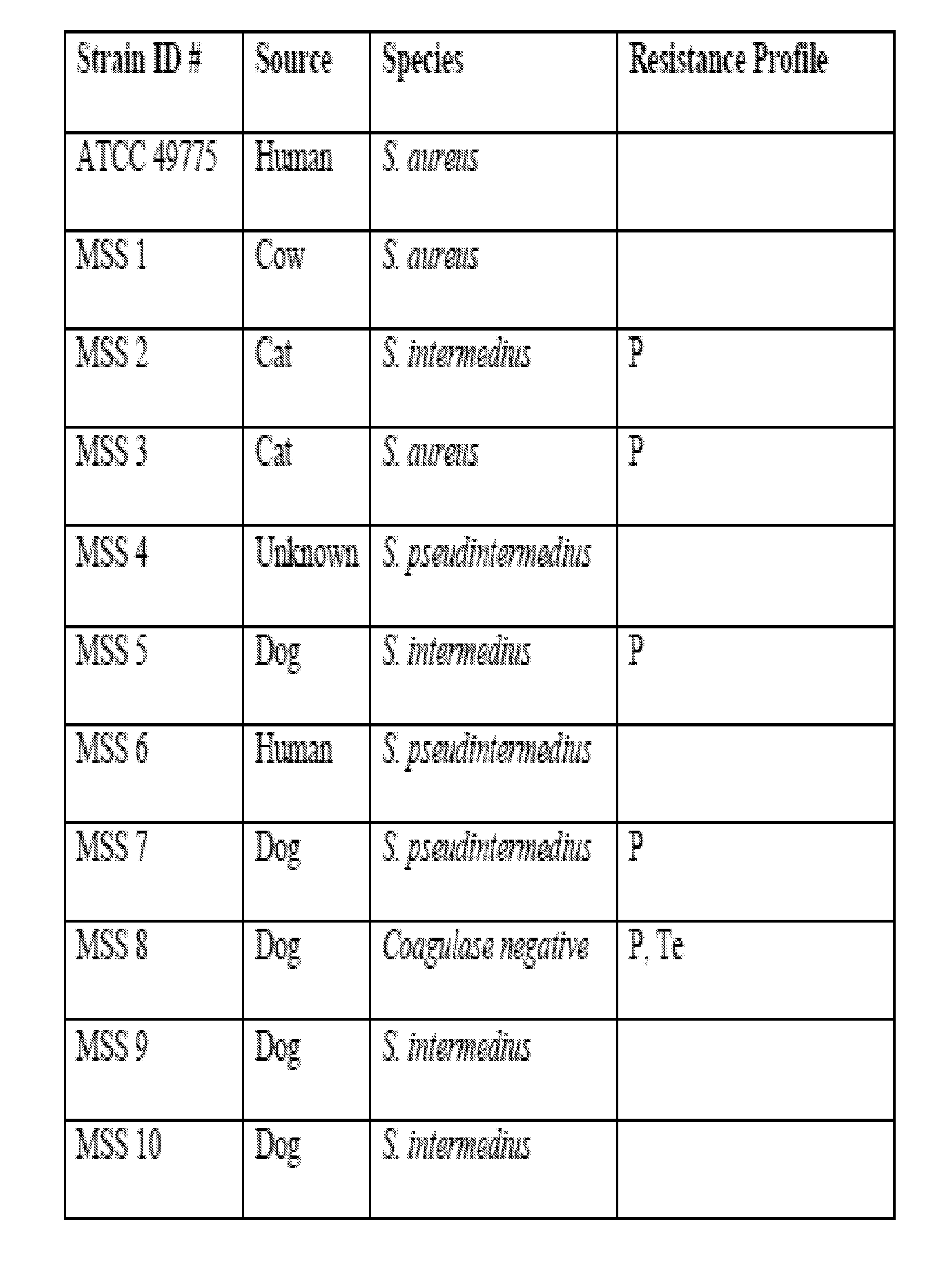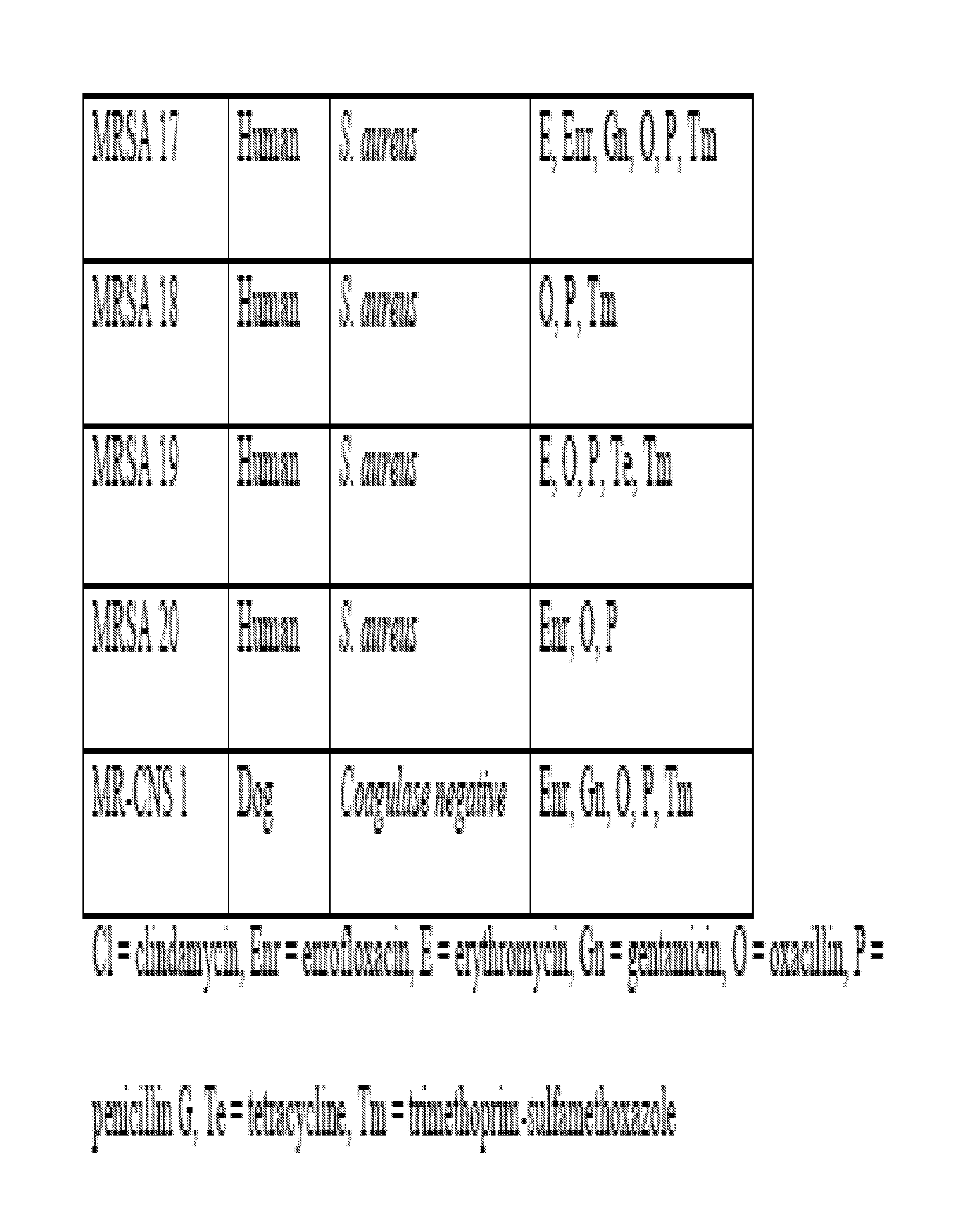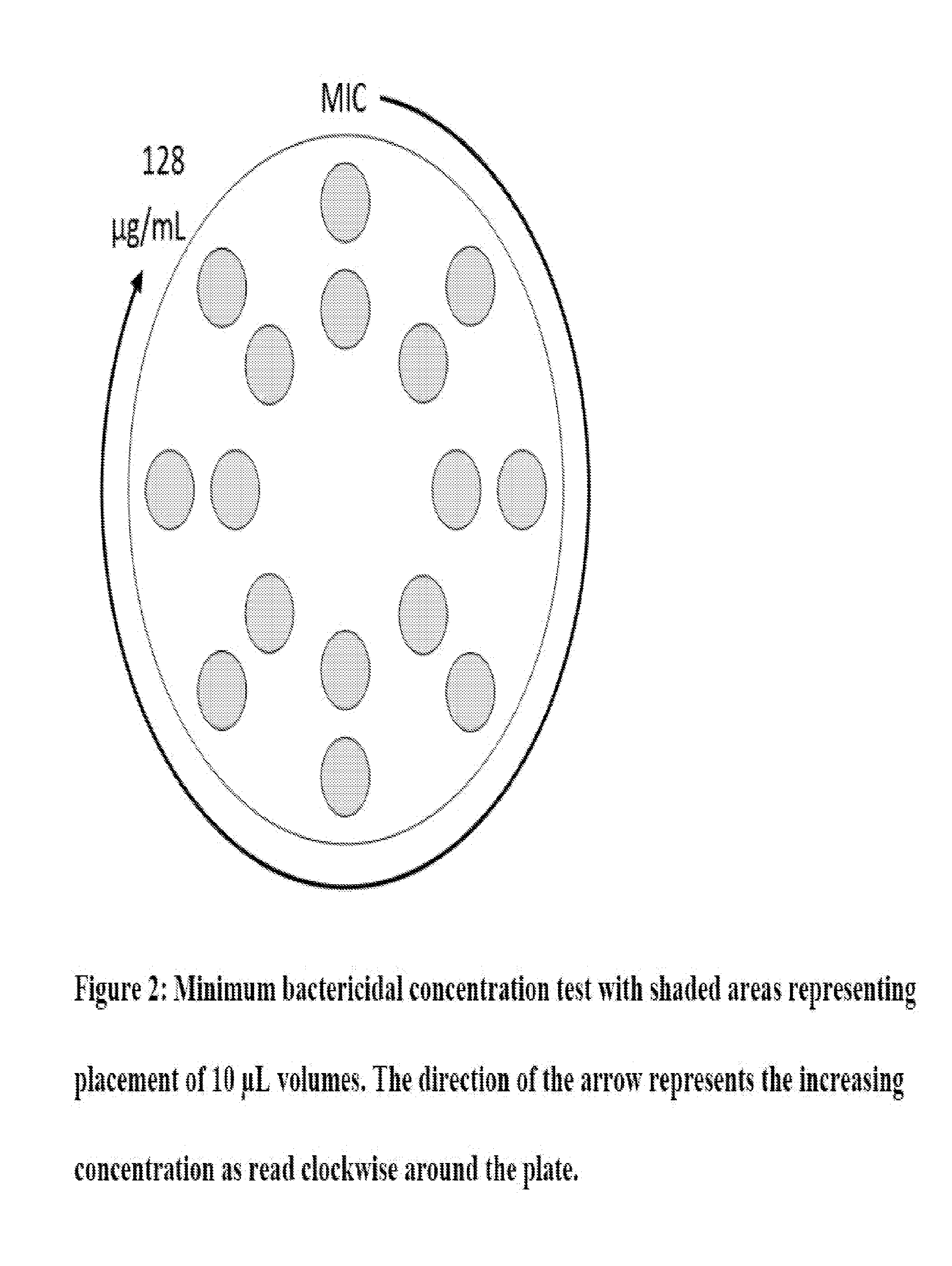Methods of treating topical microbial infections
a technology of microbial skin infection and treatment method, which is applied in the direction of biocide, antibacterial agents, nitro compound active ingredients, etc., can solve the problems of bacteria lyse, high internal osmotic pressure, and difficult treatment of i>staphylococcus /i>bacteria, and achieves a minimal systemic absorption through the skin
- Summary
- Abstract
- Description
- Claims
- Application Information
AI Technical Summary
Benefits of technology
Problems solved by technology
Method used
Image
Examples
example 1
Antibacterial Activity Against Isolates of Staphylococcus
Specific
[0152]As is apparent from the preceding summary of the invention, the invention relates to methods of treatment of microbial skin and skin structure infections in subjects such as humans, companion animals (for example canines), or livestock species (for example, bovine animals). As is also apparent from the preceding summary of the invention, the invention also relates to compositions used in such methods of treatment of topical microbial infections.
[0153]It will be understood that systemic exposure of a subject to be treated according to the methods of treatment of the invention, or the compositions described herein, is to be minimised in order to minimise toxic effects of exposure to therapeutically effective amounts of polyether ionophores. It will be appreciated that the cornified layer of the skin, the stratum corneum, functions as a physical barrier to absorption of therapeutically effective amounts of polyeth...
example 2
Antibacterial Activity Against Skin Lesion Isolates
[0169]Isolates of Staphylococcus pseudintermedius were collected from skin lesions of various breeds of dogs. The presence of mec gene and the resistance profile were determined according to the materials and methods described in example 1.
[0170]FIG. 21 shows the results obtained for RT-PCR determination of mecA gene presence and resistance profile to various antibiotics. FIG. 22 shows the resistance profile of all the isolates obtained. FIG. 23 shows the results of testing ampicillin LP1369, LP4525 and LP6315 against each isolate as well as providing a summary of the MIC50, MIC90, MIC mode and MIC range.
example 3
Antibacterial Activity Against Bovine Mastitis Isolates
Summary
[0171]Five antimicrobial agents, LP 1088, LP 1369, LP 4525, LP 6315 and LP 9666, were tested against 51 Australian bovine mastitis isolates, primarily pathogenic S. aureus species, S. agalactiae and S. uberis. LP4525 exhibited the lowest MIC50 and MIC90 (0.25 μg / ml and 1 μg / ml respectively). For LP1088, LP1369, LP6315 and LP9666, an MIC90 of 2 μg / ml, 4 μg / ml, 4 μg / ml and 128 μg / ml was obtained, respectively. All tested antimicrobials elicited MBC values that suggested that these compounds are bacteriostatic against mastitis pathogens. LP4525 appears to be the most promising candidate intramammary antimicrobial agent to treat bovine mastitis cases resulting from infection with Gram-positive bacteria.
Materials and Methods
Bacterial Isolate Collection and Identification
[0172]Fifty-one dairy bovine mastitis isolates, encompassing a variety of bacterial species, were isolated from milk samples collected from dairy farms in rura...
PUM
| Property | Measurement | Unit |
|---|---|---|
| concentration | aaaaa | aaaaa |
| volumes | aaaaa | aaaaa |
| concentrations | aaaaa | aaaaa |
Abstract
Description
Claims
Application Information
 Login to View More
Login to View More - R&D
- Intellectual Property
- Life Sciences
- Materials
- Tech Scout
- Unparalleled Data Quality
- Higher Quality Content
- 60% Fewer Hallucinations
Browse by: Latest US Patents, China's latest patents, Technical Efficacy Thesaurus, Application Domain, Technology Topic, Popular Technical Reports.
© 2025 PatSnap. All rights reserved.Legal|Privacy policy|Modern Slavery Act Transparency Statement|Sitemap|About US| Contact US: help@patsnap.com



